Gallery Network
7 Questions for Bijijoo, the Artistic Polymath Whose Colorful, TikTok-Famous Works Make Their London Debut This Week
The artist has gained legions of followers who are drawn to his dynamic and enigmatic troupe of characters.
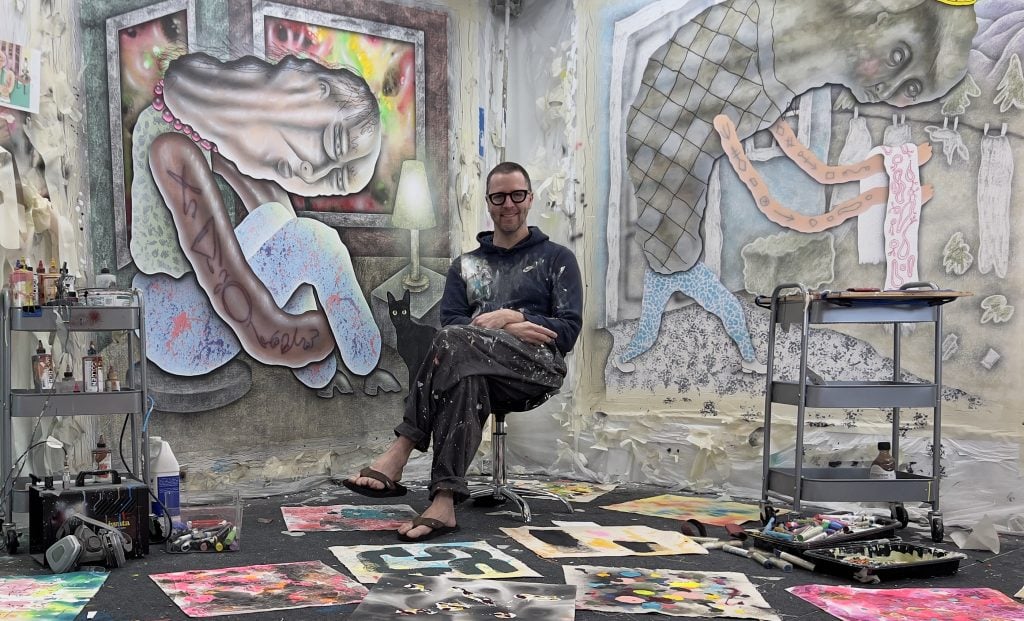
The artist has gained legions of followers who are drawn to his dynamic and enigmatic troupe of characters.

Artnet Gallery Network

Originally from Atlanta, Michael Todd Horne, best known by his sobriquet Bijijoo (b. 1975), is a Portland-based artist who has garnered attention for the imaginative cast of characters and monsters in his medium-agnostic works. Bijijoo’s artistic proclivity was apparent in childhood, but he went on to study in the sciences—including math, computer science, and chemistry, among others—leading to a PhD in biophysics in 2008. Using both his passion for art and technical background as the bedrock of his creative practice, Bijijoo has established an inimitable style that employs a wide range of mediums and techniques, and no small amount of whimsy.
Shortly after the first year of the pandemic, the polymath artist joined TikTok, where his brightly colored and charismatic monster paintings captured the imagination of a worldwide audience. His videos (which usually feature self-composed electronic music) let followers catch a glimpse of his dynamic and multifaceted creative process, with most of his works involving multiple mediums, tools, and techniques.
This week on March 16, Bijijoo unveils his first solo show at Saatchi Yates, London, which presents a whole troupe of his lively characters. The collection of large-scale paintings brings to the fore themes of nostalgia, the grotesque, life, and death.
We caught up with Bijijoo to learn more about where these monsters came from and what he makes of his TikTok success.
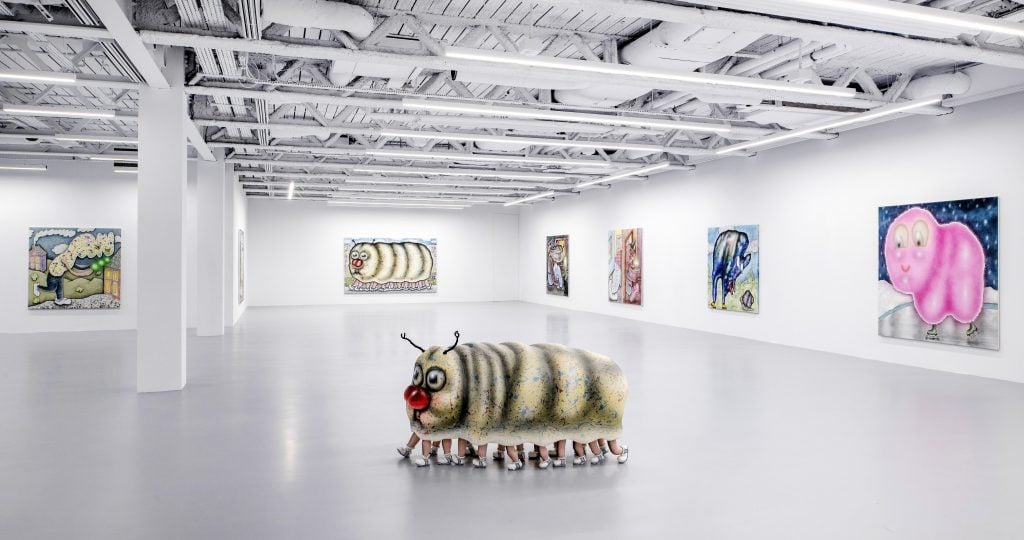
Installation view of “Bijijoo” (2023). Courtesy of Saatchi Yates, London.
When did you first start creating monsters and characters in your work? What first inspired them?
When my daughter was a baby (she is six years old now), she saw a picture of Chewbacca on a cereal box that totally fascinated her. That got me into making silly drawings of Chewbacca and other monsters for her delight. At the time, I was struggling to find a way back into art after a long break. Making art for her set me on a path that felt authentic—I’ve always made doodles and cartoons since childhood. As my daughter got older, she got into drawing and making art, too (she’s currently into drawing cats and Pokémon), so it’s a wonderful thing we share.
Your inaugural solo exhibition opens at Saatchi Yates this week. Can you tell us a bit about the works included in the show and the inspiration behind it?
The work in the show draws on sketches and painting experiments from the past year, reflecting my experience coming out of the pandemic. I was also inspired by my visit to London during the Frieze fair last year: being exposed to the many different styles, techniques, and textures of works exhibited during that time. A painter friend, Eric Wert, introduced me to Andrea del Castagno’s Last Supper (1447). The marbled galaxy textures in the background of that painting really resonated with me and influenced elements of some of the works.
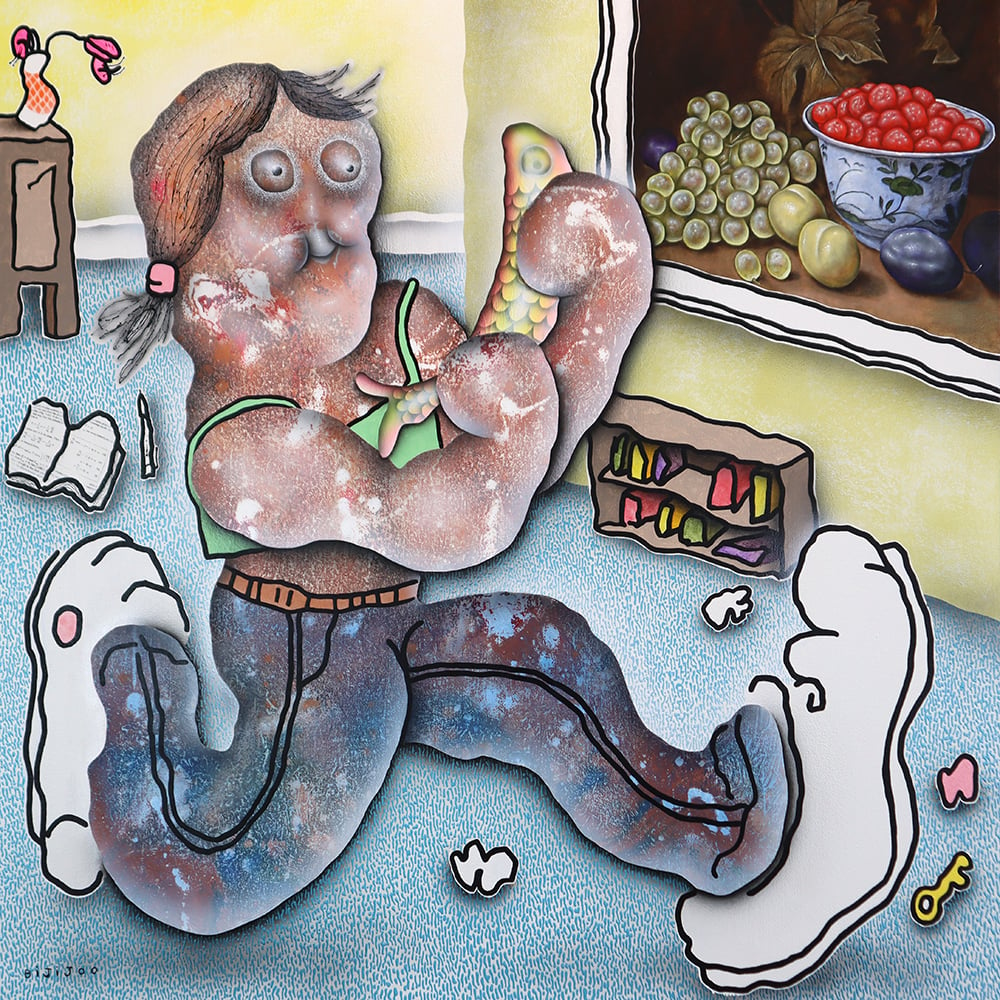
Bijijoo, Fish for Dinner (2022). Courtesy of Saatchi Yates, London.
Since joining TikTok in March 2021, you’ve amassed over 100,000 followers. How has the platform influenced or informed your practice?
I’ve recently been characterized as “TikTok famous,” or a “TikTok sensation,” which I don’t totally agree with. For me, TikTok is just another social media platform that enables the sharing of my work and process. I think social media can be detrimental to one’s mental health in many ways. That said, these platforms enable artists and creators to share their work in a forum discoverable by so many and can offer exposure and networking opportunities that can further one’s career. Social media does not inform my art practice, but instead enables me to bring what I do to a wide audience—and hopefully inspire others to create too.
What does your creative process look like, where do you start? What’s the most important tool in your studio?
I sketch all the time using an automatic and naive approach to drawing: free-form doodling and meandering lines that help me discover forms and compositions. In parallel with my sketching practice, I have an ongoing experimental painting practice: paint experiments on swatches of canvas and other substrates. I pull all this together when rendering a painting, drawing on the imagery from a sketch, informed by the chaos of paint flows and a toolkit of techniques and processes I’ve developed over time.
Though I began as an oil painter (I started oil painting in childhood), I’ve become a true mixed-media artist and rely on a set of tools and mediums such as airbrush, painting needles, masking tape, oil sticks, sanding tools, brushes, etc.
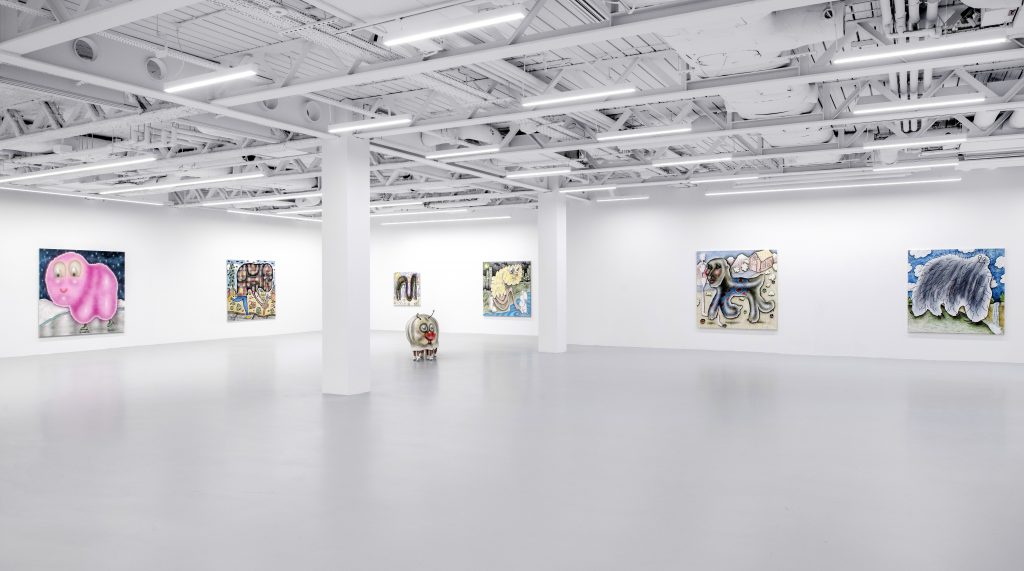
Installation view of “Bijijou” (2023). Courtesy of Saatchi Yates, London.
You frequently employ digital techniques in your work and have experience in computer science. Do you have any thoughts on A.I. art?
I’ve spent of lot of time studying and working with various digital techniques. I think whenever advances are made in technology, such as with A.I., there is a period of reactivity before the new tools mature and become better understood. I see great potential with A.I. technology and think it will eventually provide new tools and processes that advance creativity, in the manner of Photoshop.
What are you working on now or next? Are there any themes or ideas that you want to engage that you haven’t yet?
I’ve spent a lot of time experimenting with different media but have not spent as much time experimenting with different substrates, e.g., textiles on which the media is applied and manipulated. But I do have experience with textiles and want to bring that into my work. I’ve begun some conversations with some textile artists to play in that space to see where it leads.
I’m also planning on spending more time developing and publishing my music. I have a huge archive of experimental music going back to the 1990s. I’m working to develop that practice alongside my visual art.
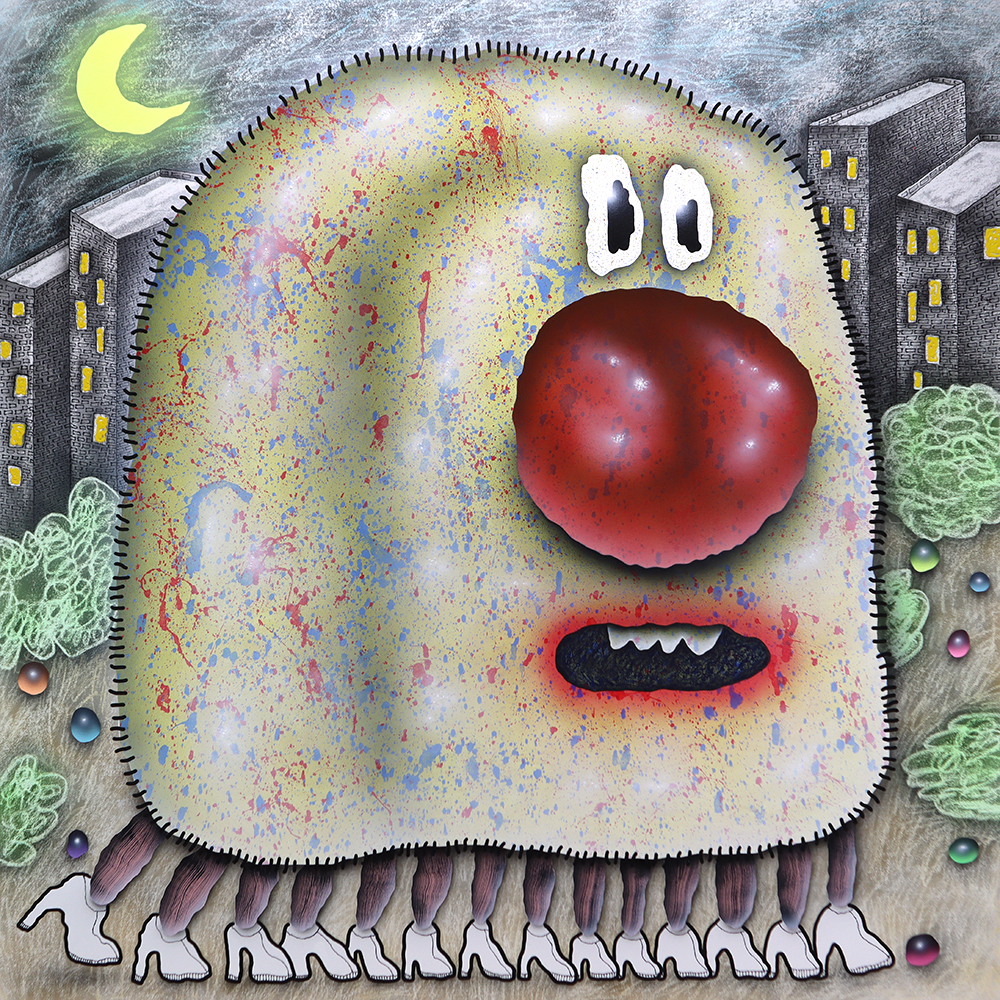
Bijijoo, Disguise (2023). Courtesy of Saatchi Yates, London.
What advice do you have for young artists or artists just starting out?
I think the most important thing is to just make stuff, build things, get comfortable with failure, and keep doing it. Artists can succeed—however you want to define that—by working to find the things they are passionate about and using that passion as the foundation of their work.
“Bijijoo” is on view at Saatchi Yates, London, March 16–May 28, 2023.